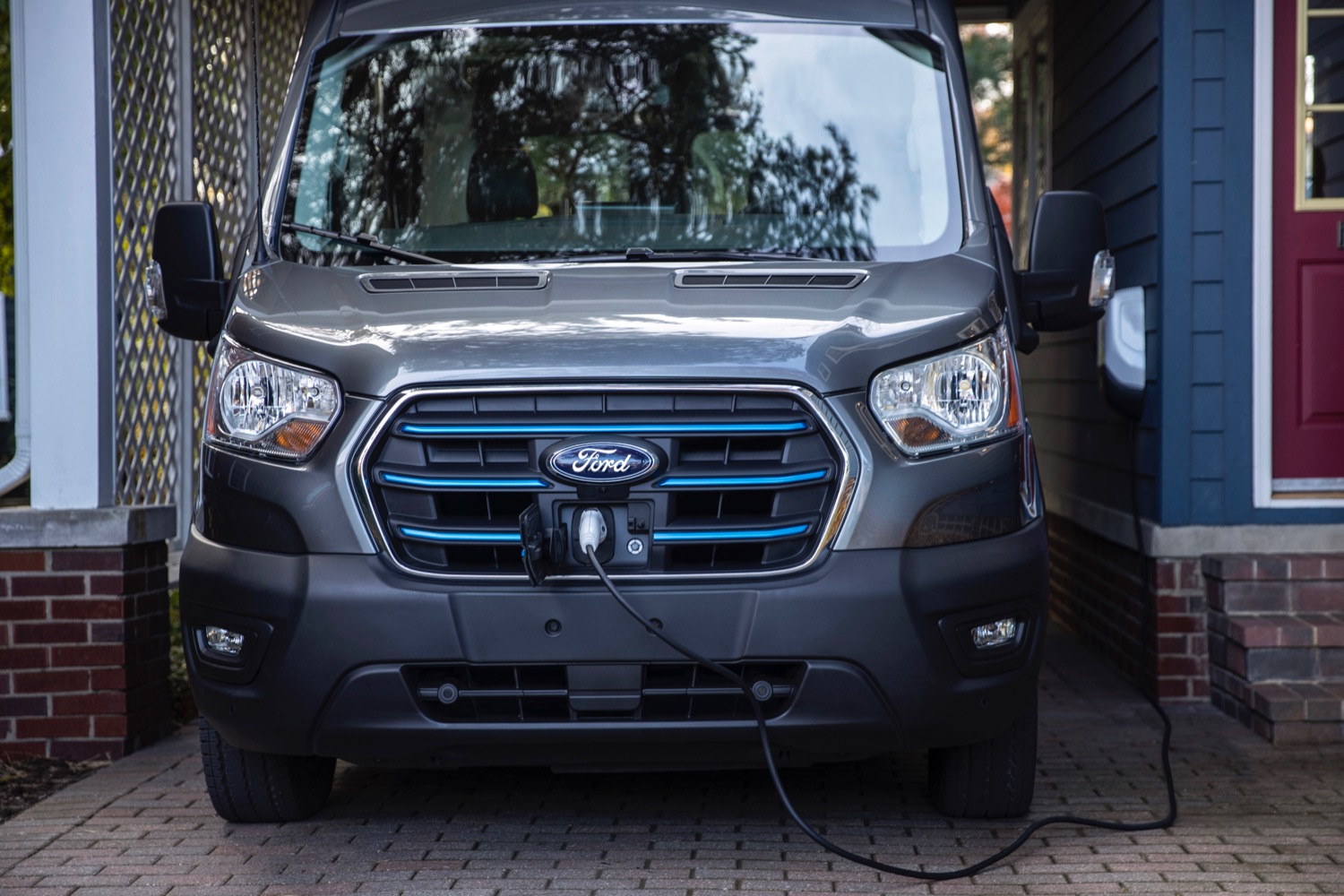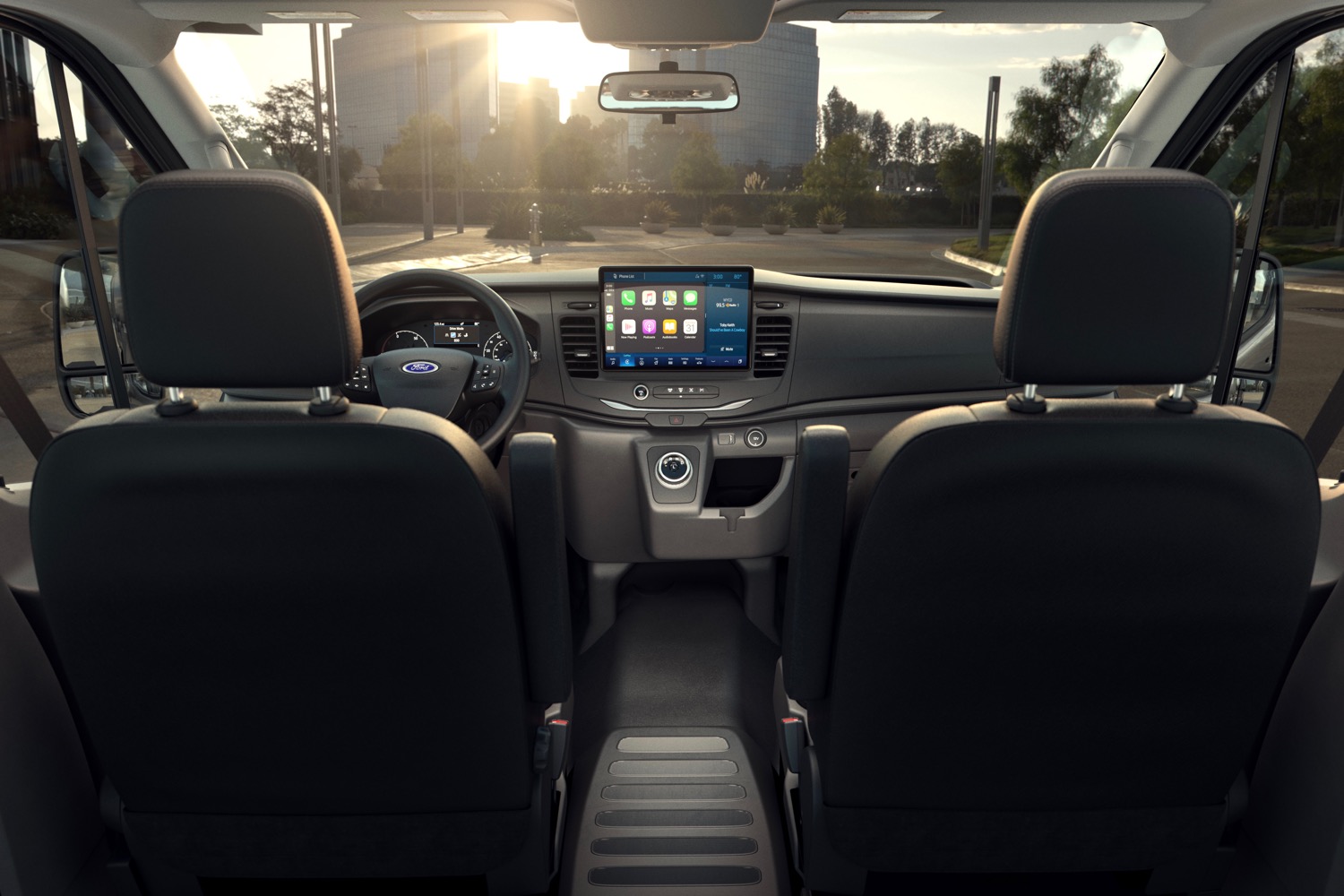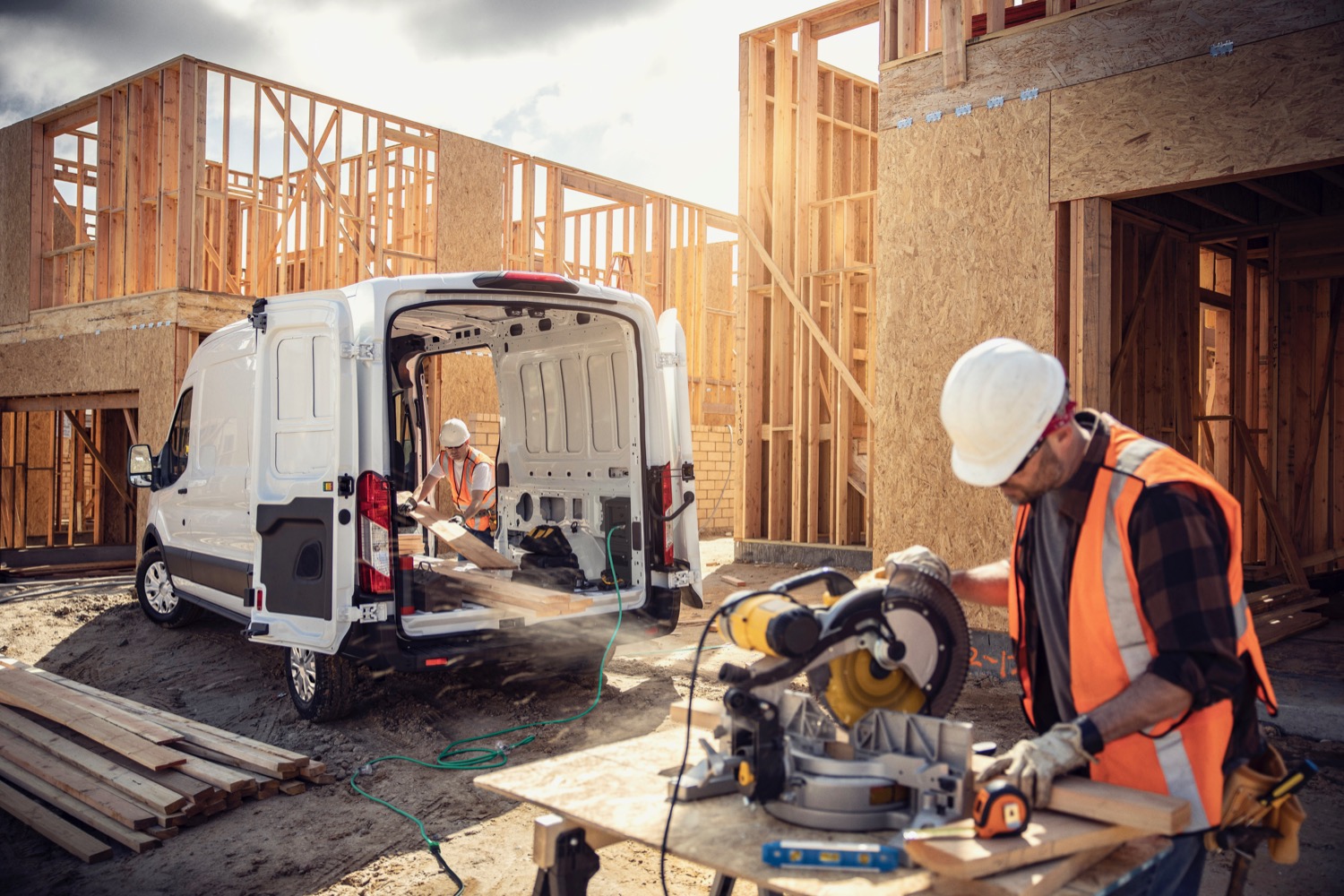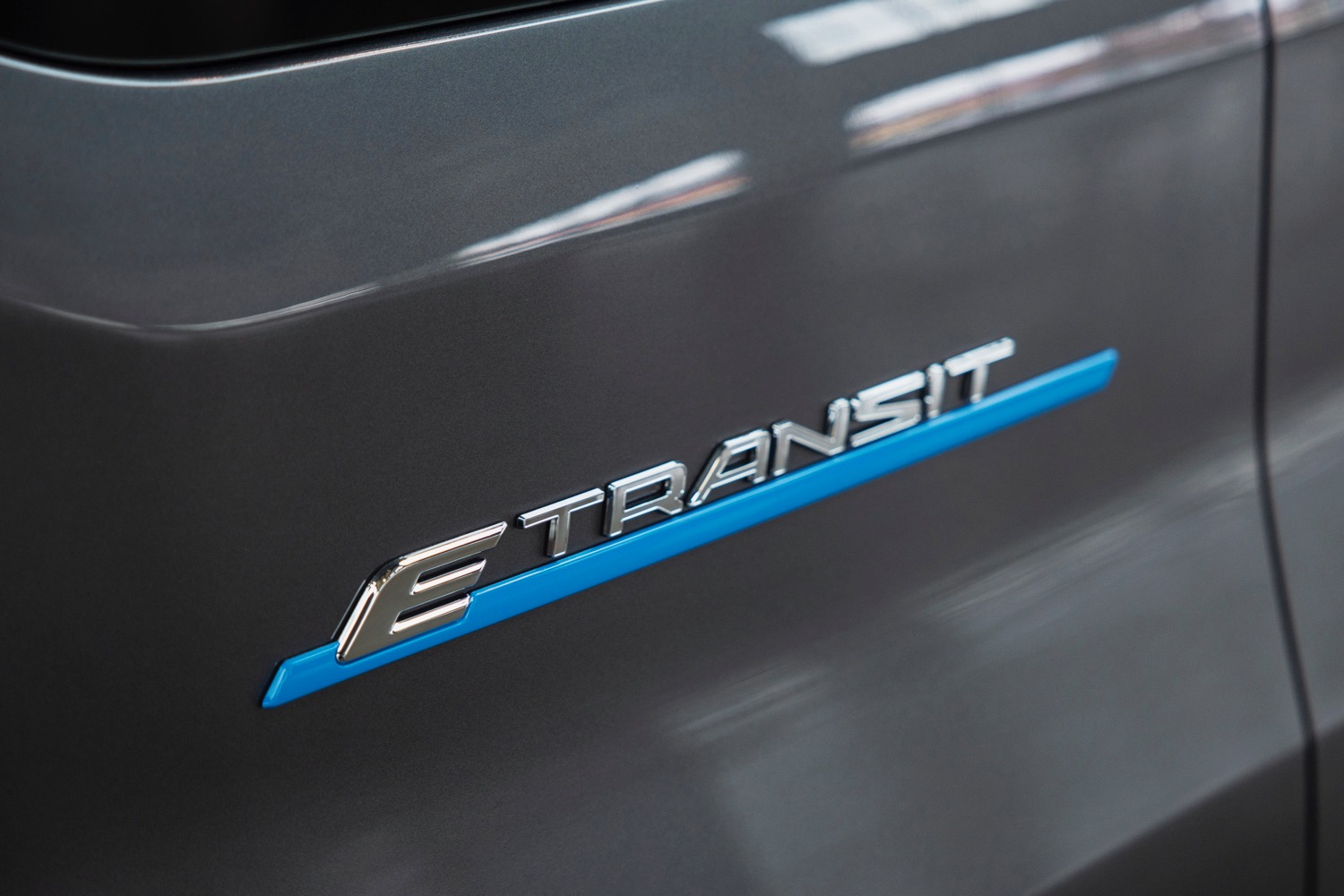Electric cars may get most of the attention, but they’re not the only vehicles on the road. Delivery vans get more daily use than the average passenger car, and they’re the backbone of online commerce. With that in mind, the 2022 Ford E-Transit might be one of the most important vehicle launches of the year.
An electric version of the ubiquitous Ford Transit van, the E-Transit offers a zero-emission option to commercial fleets and, potentially, will lower the carbon footprint of your online shopping. It’s scheduled to go on sale in late 2021.
Design
The E-Transit is based on the same platform as gasoline versions of the Transit and looks virtually identical to its internal-combustion siblings. Even the charge port is cleverly hidden in the grille. Under the skin, however, the E-Transit was given independent rear suspension in order to make room for the battery pack, Yaro Hetman, global marketing director of Ford electric trucks and vans, told Digital Trends.
While the gasoline Transit is offered in both passenger and cargo configurations, the E-Transit is only available as a cargo van. Configurability is still important to van buyers, though, so Ford is offering the E-Transit in three roof heights and three lengths, plus chassis-cab and cutaway models.
Ford sells both the full-size Transit and the compact Transit Connect in the United States, but the Transit appeals to a wider range of customers, making it a better fit as the automaker’s first electric commercial vehicle, Hetman told Digital Trends.
Tech
The E-Transit gets Pro Power Onboard, which allows the van to serve as a mobile power source. It can draw up to 2.4 kilowatt-hours of electricity to run tools or devices at job sites, according to Ford.
A standard 12.0-inch touchscreen runs Ford’s Sync 4 infotainment system, which incorporates over-the-air software updates, cloud-enhanced navigation, and improved voice recognition compared to the outgoing Sync 3 system, according to Ford. It also includes a driver-coaching feature that scolds drivers for rapidly accelerating, braking harshly, or not wearing their seatbelts.
Like Ford’s passenger cars and trucks, the E-Transit also gets the Co-Pilot360 bundle of driver aids. Standard features include lane-keep assist, forward-collision warning, and automatic emergency braking. Optional features include blind-spot monitoring, a 360-degree camera system, reverse automatic emergency braking, adaptive cruise control with speed sign recognition, and Intelligent Speed Assist, which can automatically change vehicle speed to match the posted limit.
However, not all of the tech in the E-Transit is for the driver. Some of it is for the driver’s boss.
Ford equipped the E-Transit with a number of telematics features (enabled by a built-in 4G LTE modem) that allow fleet managers to keep tabs on vehicle use. The van can send alerts when it hasn’t been plugged in on schedule, and managers can track when employees charge company vehicles at home, so they can be reimbursed. Telematics can also show when a vehicle is being moved after hours, alerting owners to possible towing or theft, Julius Marchwicki, COO of Ford Commercial Solutions, told Digital Trends.
Specifications
The E-Transit uses a single electric motor, which produces 266 horsepower and 317 pound-feet of torque. Estimated payload capacity is 3,800 pounds, or 4,290 pounds for cutaway versions. Maximum cargo space is 487.3 cubic feet for long-wheelbase, high-roof models. Ford says that’s comparable to the gasoline Transit.
Mounted under the floor, the battery pack has a 67 kilowatt-hours of usable capacity, allowing for up to 126 miles of range with the more aerodynamic low-roof body, according to Ford. That may sound unimpressive when some electric cars boast more than 400 miles of range, but keep in mind that the E-Transit is designed for fleet use. That means vans often won’t travel far from a central depot, where they can be charged overnight.
“We expect the vast majority of these vehicles to be charged during their natural downtime,” Hetman told Digital Trends. However, Ford is also offering customers a streamlined public-charging interface, allowing drivers to access stations on multiple networks like Electrify America and ChargePoint through a single app.
The E-Transit is equipped for DC fast charging at up to 115 kilowatts, allowing it to recover 30 miles of range in 10 minutes, or 45 miles in 15 minutes, according to Ford. A full recharge from a 240-volt Level 2 AC source takes eight hours.
Pricing
Ford said the E-Transit will have a base price of under $45,000, and the van should qualify for various federal, state, and local incentives, but it will likely still represent a significant premium over a base gasoline Transit cargo van, which starts at around $35,000. Ford is betting that lower running costs and environmental concerns will convince commercial fleets to swallow any price premium.
The E-Transit will be built alongside gasoline Transit models at Ford’s Kansas City Assembly Plant in Claycomo, Missouri. The automaker noted that 13 “upfitters” are located within 30 miles of the factory, so vans can be outfitted for various jobs before delivery to customers. Ford also said 90% of its 645 U.S. commercial-vehicle dealers are electric-vehicle certified, indicating the company is serious about selling large numbers of electric vans.
Ford claims to be the first full-line automaker to offer an electric van in North America, but the E-Transit still has plenty of potential competition. Rivian (which counts Ford as an investor) is building electric vans for Amazon, while Arrival is expected to build vans for UPS. Neither company has delivered a single vehicle yet, however. Workhorse and Chanje have built small numbers of electric vans, but they don’t operate on the same scale as Ford.
Among other large automakers, Mercedes-Benz sells an electric version of its Sprinter van in Europe, but not the U.S. General Motors has hinted at an electric van as part of its wide-ranging electrification push but hasn’t released any details.





